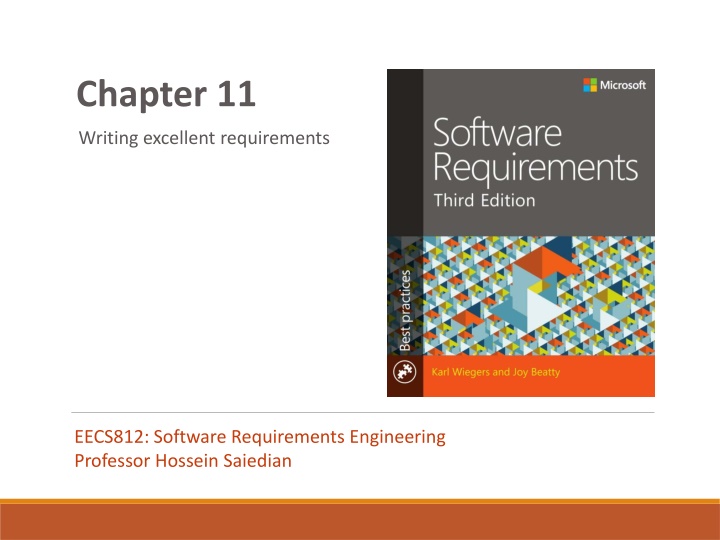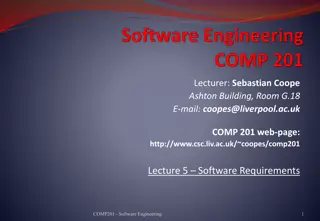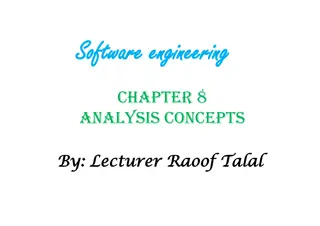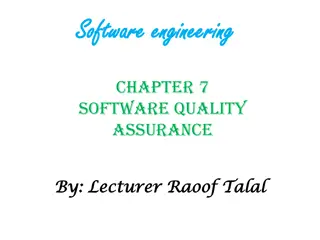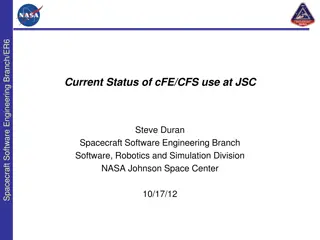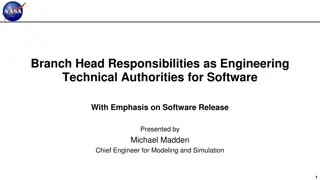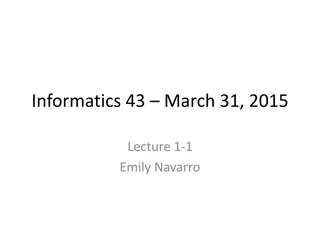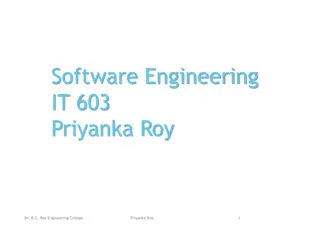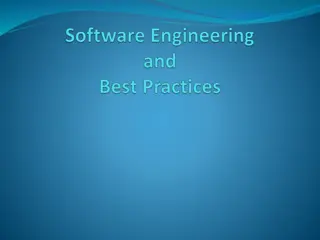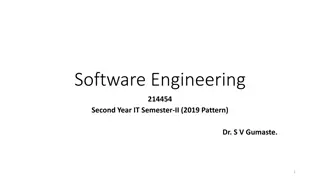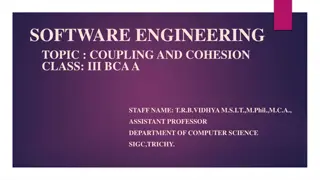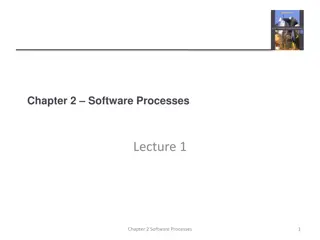Writing Excellent Requirements for Software Engineering
This chapter delves into the art of writing exceptional requirements for software engineering projects. It covers key principles such as determining adequacy, improving quality, refining writing style, and ensuring correct interpretation. Learn about the characteristics of good requirements statements and collections, along with essential tips for enhancing your writing skills. Understand the importance of clarity, consistency, and avoiding ambiguity in requirement documentation to drive successful software development.
Download Presentation

Please find below an Image/Link to download the presentation.
The content on the website is provided AS IS for your information and personal use only. It may not be sold, licensed, or shared on other websites without obtaining consent from the author.If you encounter any issues during the download, it is possible that the publisher has removed the file from their server.
You are allowed to download the files provided on this website for personal or commercial use, subject to the condition that they are used lawfully. All files are the property of their respective owners.
The content on the website is provided AS IS for your information and personal use only. It may not be sold, licensed, or shared on other websites without obtaining consent from the author.
E N D
Presentation Transcript
Chapter 11 Writing excellent requirements EECS812: Software Requirements Engineering Professor Hossein Saiedian
This chapter will help you to Determine when a requirement is adequate or needs more work How to improve inadequate requirements Refine your writing style to ensure correct interpretation EECS812: Software Requirements Engineering 2
Characteristics of good requirements statements Complete Correct Feasible Necessary Unambiguous Verifiable EECS812: Software Requirements Engineering 3
Characteristics of good requirements collections (cont.) Complete Consistent Modifiable Traceable Prioritized EECS812: Software Requirements Engineering 4
Learning to write well Experience is the best teacher Write badly, get feedback, learn, write better Two people, two interpretations = no good EECS812: Software Requirements Engineering 5
Basic instructions Choose a perspective Be concise Break it down Shall, must, needs to not might, may, should Active voice EECS812: Software Requirements Engineering 6
Details, details Appropriate level of detail based on the parameters of the project Be consistent in the granularity EECS812: Software Requirements Engineering 7
When natural language might not be ideal Lots of related requirements that are <input> leads to <output> A complicated process composed of multiple requirements EECS812: Software Requirements Engineering 8
Avoiding Ambiguity Consistent terminology Avoid fuzzy words See the text! The problem with A/B Boundary values Negative requirements EECS812: Software Requirements Engineering 9
Summary Decide how much detail you need for your requirements, and stick to it Only you can prevent ambiguity Practice makes perfect EECS812: Software Requirements Engineering 10
